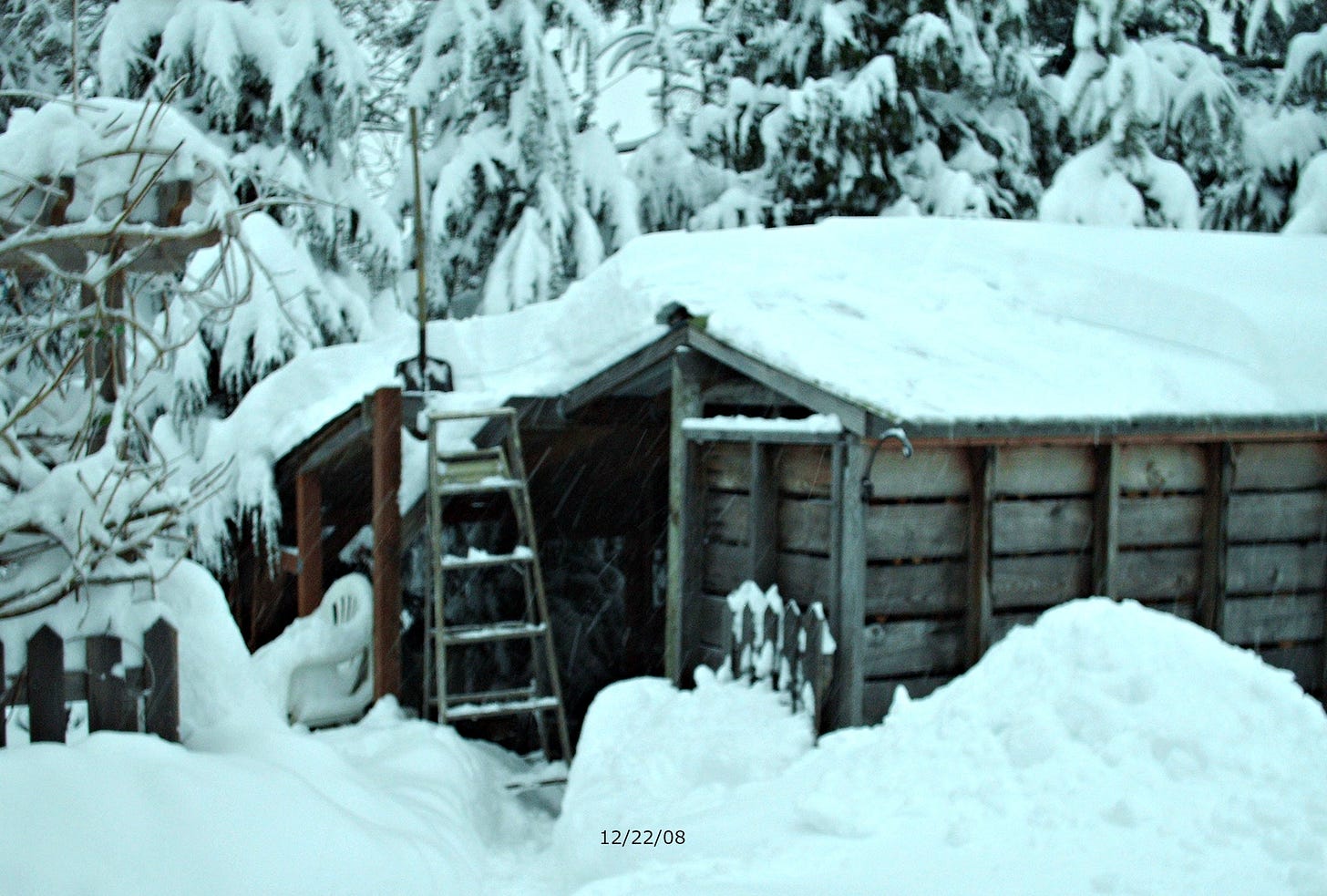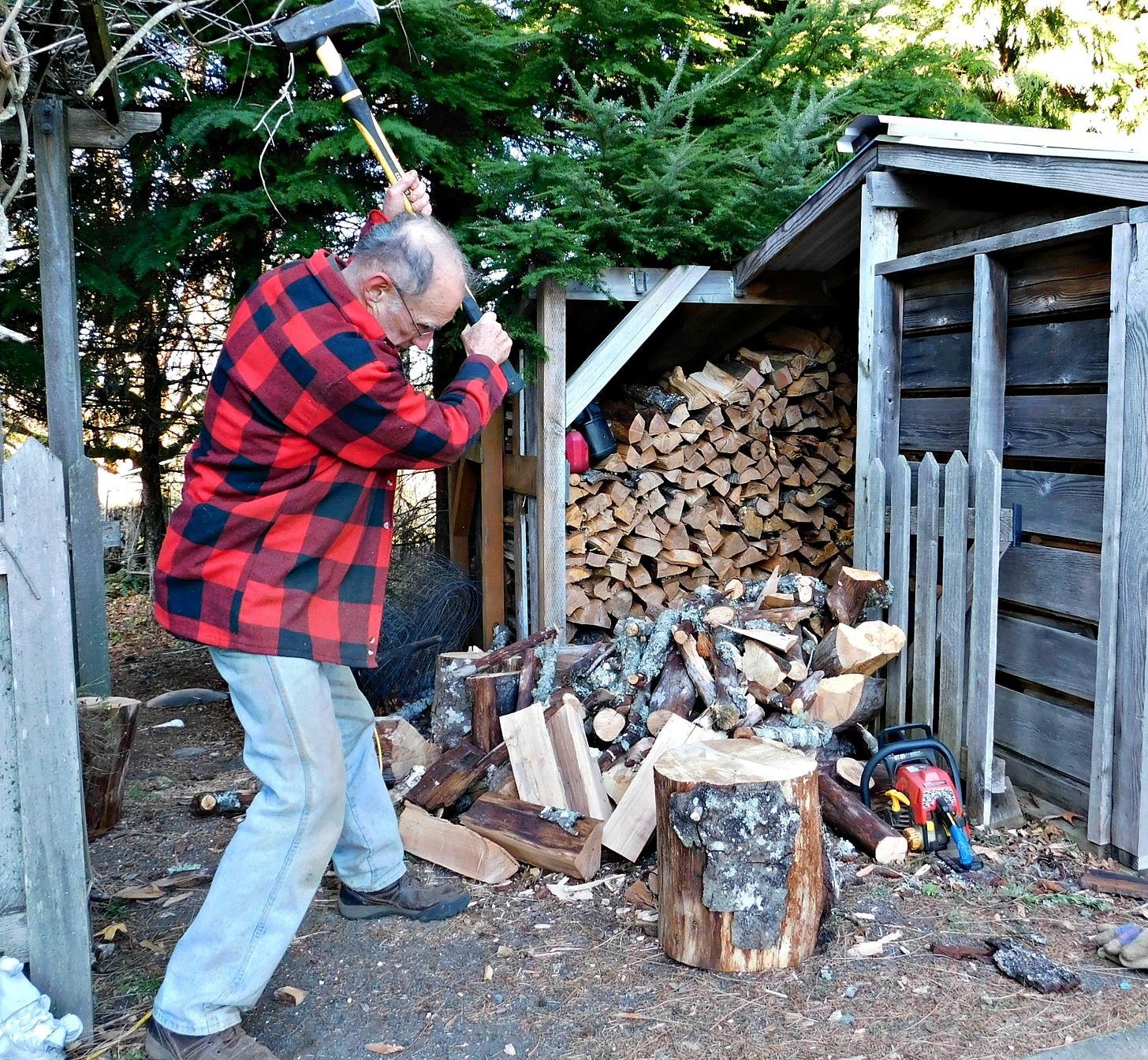Extreme Cold Weather Can Put the Dampers on the Energy Transition
A look at the effects of cold on Batteries, Wind Turbines, and Heat Pumps
One of the many reasons that EV sales are slowing is because those who have them and had bad experiences during very cold weather last winter are no doubt less enthusiastic than they were when they bought these things, and they are probably glad if they have a real car, that is, one with an internal combustion engine, at least as a backup. That puts EV owners in an elite wealthy class of people who can afford not only the expensive EV, but a backup second car, in an aging economy where a lot of people can barely afford the gas and insurance on an old beater car just to get to work. The widespread news coverage of all the stranded EVs with dead batteries in Chicago last winter has gotten the word out: EVs are not reliable in extreme cold. The cold shortens the range and makes the batteries die not only because batteries have less power when cold, but also because normal red-blooded people like to have a little heat inside their car when it’s freezing out. The heater, of course, is a further drain on the battery, unlike a gas car that gets free heat from the internal combustion engine.
It’s not just cold weather that’s a problem for EVs, so is extreme hot weather, because it shortens the battery life, and the word is out that replacement batteries cost thousands of dollars and for any thinking person, that has a really bad effect on resale value. So EVs aren’t practical in areas that often have high temps – their lifetime is too short.
But what we’re looking at here first is how extreme cold affects the energy transition.
Batteries
When I bought a 600 watt off grid solar system for emergency backup, which included a 200 amp-hour lithium battery, I didn’t realize the system couldn’t charge the battery when the air temp was below 32F. Ironically, that’s when I’m going to need the backup power – in winter, when it’s cold and we have high winds and ice storms that take down power lines. My investment was largely wasted. It’s my good ‘ol wood stove that I can actually depend on – not for electricity, but at least for warmth and cooking.
the stepladder and the shovel (on the roof) are so I could remove the snow from the woodshed roof - didn’t want it to collapse
how to geek says “A chief concern about electric vehicles (EVs)---right up there with range anxiety and cost---is cold weather…Lithium-ion batteries take longer to charge when they're cold, and regenerative braking features don't work as well either. Taken together, the adverse effect of cold weather can reduce EV battery capacity by as much as 41%”
“Some research is being done to improve the type of carbon anode in a lithium battery which will still be usable at minus 30F.” source
City Labs reports “Due to internal reactions giving off heat, batteries will typically warm up during use. Constant use of a device—even in colder climates—can protect the battery from degrading. However, when batteries are left idle in the cold for long periods of time they can sustain permanent damage. Like my backup battery Lithium-ion batteries in the cold undergo physical changes that damage their capacity. Components within the battery contract, making it difficult for electrons to transfer between electrodes. When the electrons cannot pass at the target rate, the lithium begins to congregate and form a plating around the negative electrode. Large lithium dendrites can grow on this plating and puncture the diaphragm, leading to battery failure. If a battery needs to be stored, it should be kept in a mild temperature environment and load tested before future use. If a battery has sustained permanent damage from the cold, it will likely not be able to function even when the temperature returns to normal.”
This from ‘Li Time’ “Yes, lithium batteries can be damaged by freezing temperatures. When a lithium battery is exposed to extremely cold temperatures, the electrolyte inside the battery can freeze, causing irreversible damage to the battery's internal structure. This can lead to reduced battery capacity, diminished performance, and in some cases, complete failure. Additionally, if a frozen lithium battery is charged or discharged, it can cause further damage due to the expansion and contraction of materials within the battery, potentially leading to internal shorts or other issues.”
According to electronics.stackexchange (a forum, you might have to scroll down a little) “Do not charge lithium ion batteries below 32°F/0°C. In other words, never charge a lithium ion battery that is below freezing…Doing so even once will result in a sudden, severe, and permanent capacity loss on the order of several dozen percent or more, as well a similar and also permanent increase in internal resistance. This damage occurs after just one isolated 'cold charging' event, and is proportional to the speed at which the cell is charged…But, even more importantly, a lithium ion cell that has been cold charged is NOT safe and must be safely recycled or otherwise discarded. By not safe, I mean it will work fine until it randomly explodes due to mechanical vibration, mechanical shock, or just reaching a high enough state of charge.” The forum answer continues to explain why this is, using technical language. Continue reading the article if you’re interested in the technical details, but to my point, lithium batteries are seriously affected if extreme cold, which we get at least a little of every winter in our northern states, and occasionally even in the south. Just ask Texans. I’ll quote from one more paragraph - “Interestingly, it is actually possible to charge a lithium ion cell below freezing, but only at exceedingly low currents, below 0.02C (so more than a 50 hour charge time).”
Heat
greentechrenewables tells about the other extreme - the effect on batteries when it gets up to 113 deg F. “A study by Scientific Reports found that an increase in temperature from 77 degrees Fahrenheit to 113 degrees Fahrenheit led to a 20% increase in maximum storage capacity. That’s nice - but wait - “However there is a side effect to this increased performance, the lifecycle of the battery is decreased over time. In that same study, it was found that when the battery is charged at 113 degrees versus 77 the lifecycle degradation was much more significant at the higher temperature. For the first 200 cycles the battery performance only degraded 3.3% at 77 degrees; at 113 degrees the performance decreased by 6.7%. That’s more than double the amount of degradation!”
So the bottom line is that lithium batteries and thus EVs aren’t very practical if you live in the north or the south. Maybe you’re OK if you’re in the middle?
Wind turbines are affected by the cold, too
From The Freedom Corner “A whistle blower has revealed that wind power turbines in Scotland have been powered by huge diesel generators in the winter to keep them warm… 71 wind power turbines were connected to six massive diesel generators to de-ice them after a cabling fault developed.”
Wind turbine blades can ice up in cold weather. Chunks of ice can fly off, endangering anyone in the vicinity. So in northern latitudes and high elevations, or anyplace where cold winters are the norm, most wind turbine blades now use some of the energy they produce for de-icing systems. Of course this decreases the efficiency of the wind power. They also need some way to warm the huge 20 ton generators so the 1400 liters or so of lubricating oil will still be effective in subzero temps.
Heat pumps
I have a Mitsubishi split unit heat pump for a couple rooms. It’s nice for cooling the bdrm in the summer, but it’s worthless for heating when it’s really cold out because it’s not designed for cold weather. (There are heat pumps that are designed for cold weather; they have built-in electric heating elements for backup.) Mine is so inefficient below 40F that I don’t even turn it on during most of our winter – again, it’s the woodstove that comes through in the clinch, and I’m doing my part - after all, wood is renewable, you know - and it grows faster if it gets more CO2.








Great post on the perils of the EV batteries. The photo of you splitting wood reminds me of the Dad and/or Grandpa on the TV series, “The Walton’s.” Some of the Old Timey ways are still the most satisfying!
I have always thought of burning wood as carbon neutral--just transferring carbon from the wood to the air and to ashes for my garden. (I have yet to adjust to our new house, which so far lacks a woodstove.)